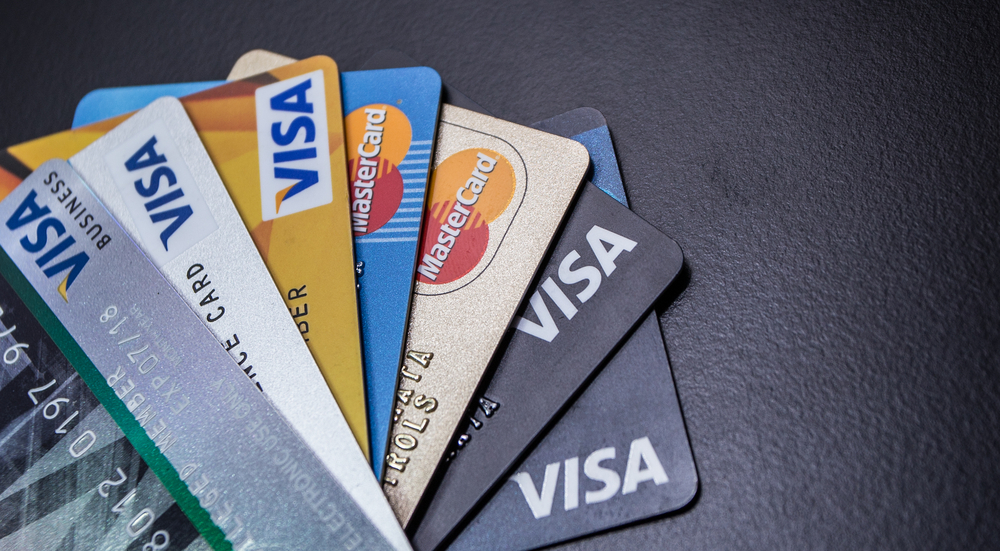Are you struggling with bad credit? Don’t worry, you’re not the only one. There are financial institutions that can help you qualify for a credit card despite your credit rating.

They can become an obstacle with your future life goals, from car ownership to home ownership. The worse your credit, the more expensive borrowing becomes for you. Working to get that bad credit into good credit starts with rebuilding your credit.
Don’t ever think it’s impossible. Michael Steinberg, who works at Wells Fargo as a Credit Analyst, stated, “Creditors are more comfortable since the financial crisis to working with customers who have bad credit.”
Is there a benefit to getting yet another credit card?
Absolutely! You’re looking to fix your credit and rebuild it. Having another card can help get your plan in motion.
Ability to consolidate debt with special rate offers
As a promotion, credit card companies will offer low to zero percent interest rates for a significant amount of time.
“For those that qualify for such an offer, it can be an ideal point to put all current high-interest debts into this one consolidated card and pay off everything with no interest during the promo period,” says Steinberg.
This is an excellent way to combat your high-interest rates for your other debt. You can lower your monthly payments and obligations by moving them to these promotional rates. Do keep in mind these promotional rates will expire.
Getting a specific purpose card
Credit cards come alongside a slew of rewards and promotions that are focused on specific purposes. Common examples are getting additional reward points when grocery shopping, buying gas, or even travelling. It’s a way to get bonuses for everyday shopping.
Expanding your credit diversification
While having too much credit can be bad, not having enough can backfire. If you find yourself with only a couple of lines of credit, then future lenders only have those two options to review.
“When reviewing your application, creditors want to see positive patterns with your revolving debt that’s typically unsecured. An additional credit card can help and show you are able to repay.” Says the risk manager at RBC, Rob Walsh.
Better credit limit to utilization ratios
With a new credit card, your overall credit amount increases. At the same time, your total credit utilization can become lower in the process, which is how much of your overall credit you’re using. You want to keep this number low in general and try to get it below 30%. That means if you have $10,000 in total credit borrowing possible, you only want to utilize up to $3,000.
A New Credit Card for People with Poor Credit
It will be tricky to receive a new credit card, but that doesn’t mean it’s not possible at all. There are several choices you can consider that we will take a look at below that might be possible with bad credit.
Secured Credit Card
This is a superb way to rebuild your credit, and it should be relatively simple to obtain. You typically deposit the amount of money you want your credit limit to be, and that secures the credit itself. This way, even if a payment is missed, your deposit is able to cover it. There are minimums for a card such as this, usually around a $200 deposit. They also usually come with higher fees or an annual fee, so make sure to take that into consideration.
Walsh goes on to add, “A secured credit card is a great way to stack up your credit. Just use it consistently but sparingly, and always make sure to pay in full.”
An Unsecured Credit Card for those dealing with bad credit
After a while, you’ll be able to get your deposit back (check the terms but usually a year of consistent usage and payments). That means you have the same card at the same rates and fees, but you no longer have to have the financial institution hold your deposit. If your credit hasn’t gone up enough in that past year, then you’ll want to continue on with this card until your credit gets good enough for you to seek alternatives.
Credit card for Subprime scores.
These will tend to have the maximum interest rates on the card. Think 30% APY or higher. They will also have numerous fees on top of those rates, from monthly payments to service fees and even fees for processing. You’ll also have to go through an extremely detailed credit check to obtain one of these.
Consider a credit card from a retail institution
Many retail centers and big box stores will offer some type of credit. It tends to be easy to get approved for these because they aren’t like normal credit cards in some ways. More specifically, you can typically only use that credit card with that particular store. It’s the same as getting financing for larger purchases at a store. The limits tend to be lower than regular cards as well. Yet as long as you keep paying them back on time, you should see your credit improve. These retail cards will also have high rates as well so be warned.
Always make sure to choose based on your credit goals and research!
Hopefully, it’s clear that even with bad credit, there are still avenues to consider that can assist you in getting your credit on track and get a new credit card. First, you want to check the overall market. Always set aside time to do your due diligence and research on those that are giving you your credit cards.
“Through proper searching and research, you will easily find solutions that will lead to a new card and better score for your credit,” said Walsh.
Don’t forget to compare your options and not simply pick the first credit card for bad credit that you find.
Disclaimer : All loans and credit cards are subject to credit and underwriting approval. ConsumerAdvice.co is an information blog and a search platform, not a lender. ConsumerAdvice.co only works with advertiser partners and networks that comply with laws and regulations of Canada, United Kingdom, United States, Australia, and New Zealand. Credit cards range from $500 to $50,000 with Annual percentage rates (APRs) range from 12.5% to 19.9% and depend on the assessment of your credit profile. Loans range from $500 to $50,000 with terms ranging from 12 months to 60 months or more. Loans APRs range from 5.99% to 29.8% and depend on the assessment of your credit profile. For example, for a $8,700 loan paid monthly over 36 months, a person would pay $260.75 per month for a total of $9,386.88 over the course of the entire loan period.






